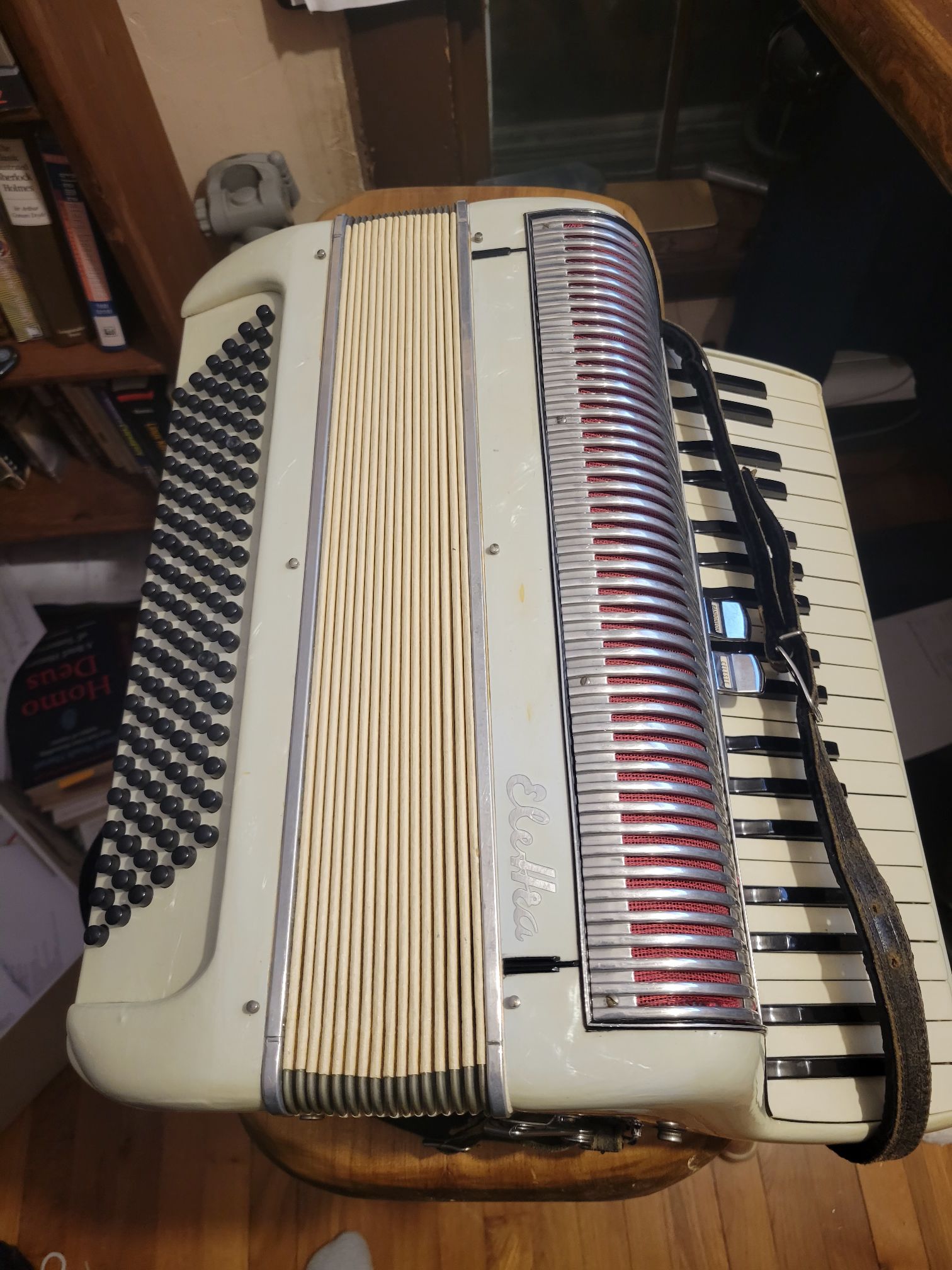For my birthday last year, my family got me an accordion. Yes, I am one of those people that collect musical instruments, not for their monetary value but because I enjoy trying them out. I spent some time trying to wrap my mind and my hands around the one button chord set up on the side. I know there are masters out there that have developed a set of techniques, but for those of use from other instruments, the arraignment of notes and chords in a cycle of fifth is challenging.
It got me thinking about how else you could arrange them. This might also be somewhat inspired by guitar and bass setups, but here is what I came up with:
Start with a chromatic arrangement like this:
| G# | A# | C# | E |
| G | A | C | D# |
| F | G# | B | D |
| E | G | A# | C# |
| D# | F# | A | C |
| D | F | G# | B |
| C# | E | G | A# |
| C | D# | F# | A |
| B | D | F | G# |
| A# | C# | E | G |
| A | C | D# | F# |
Assume that this is a keyboard with the bottom left nearest to you, pointing toward the ground. The Top right is pointing away and skyward. You put your pinky on A, ring finger on C, middle finger on D#, and index finger on F#. If you play those four notes, you get a diminished 7th chord.
What should be apparent from this set up is that you can play all forms of 7th chords with your pinky on the root note. To play A Major seventh, pinky on A, ring on C#, middle on E, Index on G#. If each button is a centimeter apart, Your index finger reaches at most 4 cm from lowest to highest.
To play an A augmented pinky on A. Ring on C#, Middle on F. Your index could play the root an octave up.
This same pattern would work up to F. We’d need to extend up four notes in each column to get something that would work for each chord.
Lets move our index finger to the A four notes from the bottom. From here, an Adom7 chord in second inversion could be played with pinky (P) on C#, ring(R) on E, middle(M) on G. A Maj 7moves the ring one more space up, which should still be comfortable to reach.
Lets say you have to play a I-vi-ii-V7 progression. We’ll do this in C major, both because it is well known and because it is in the middle of our keyboard. Lets say we start with the Cmaj7 in root position. Using the first letter of each finger as short hand: P-C, R-E, M-G, I-B.
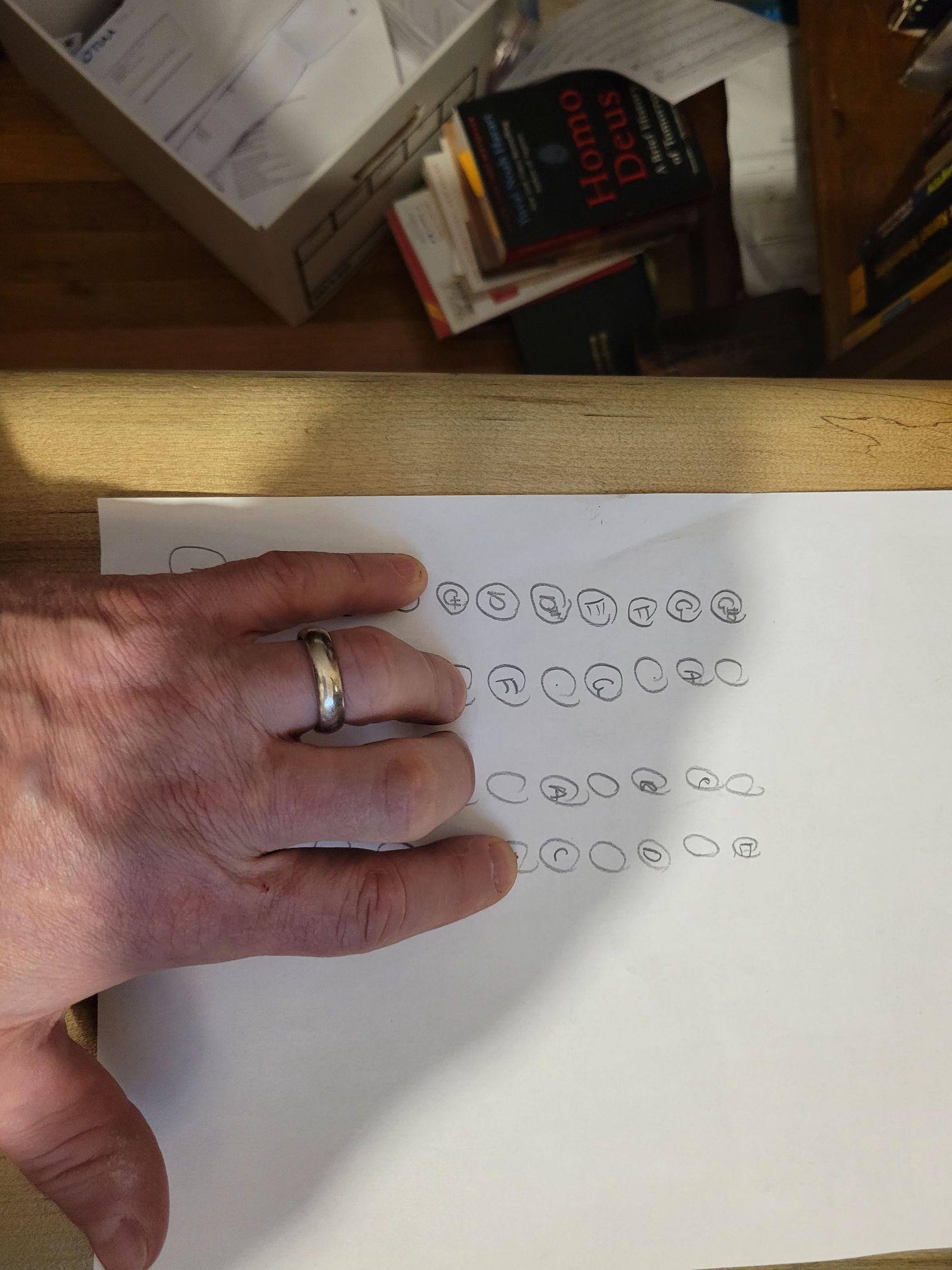
(I realize now that all the images are 180 flipped from how I described it above. Just treat it like guitar tab….)
Now to Amin7, we’ll play it as I noted above: Index stays on the A. All other fingers stay in position: P-C, R-E, M-G, I-A.
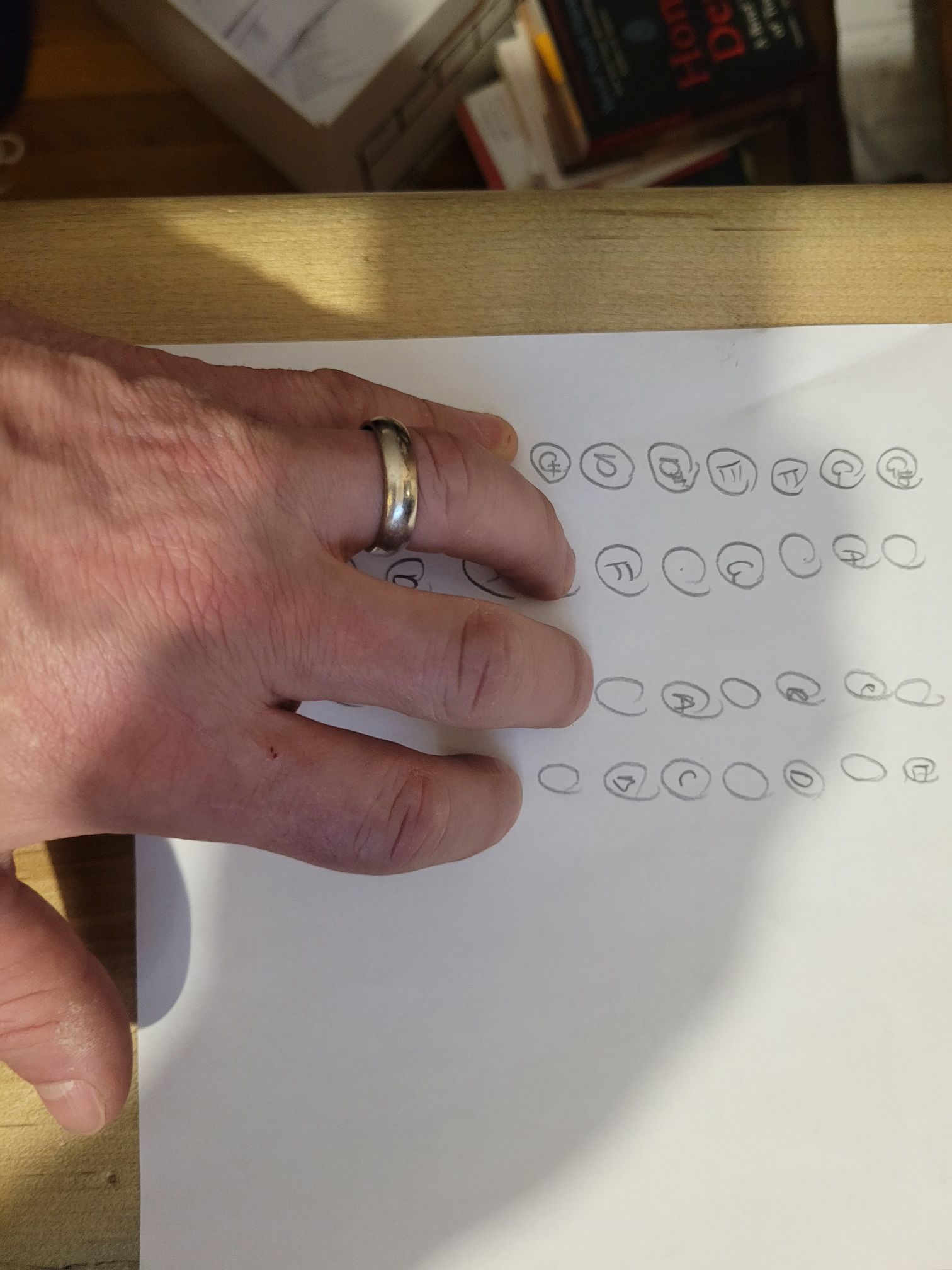
Now, to move to a Dmin7, we leave the Pinky and the Index in place (P-C, I-A) Ring finger and Middle fingers move down two keys to D and F. Seems pretty efficient P-C, R-F, M-F I-A.
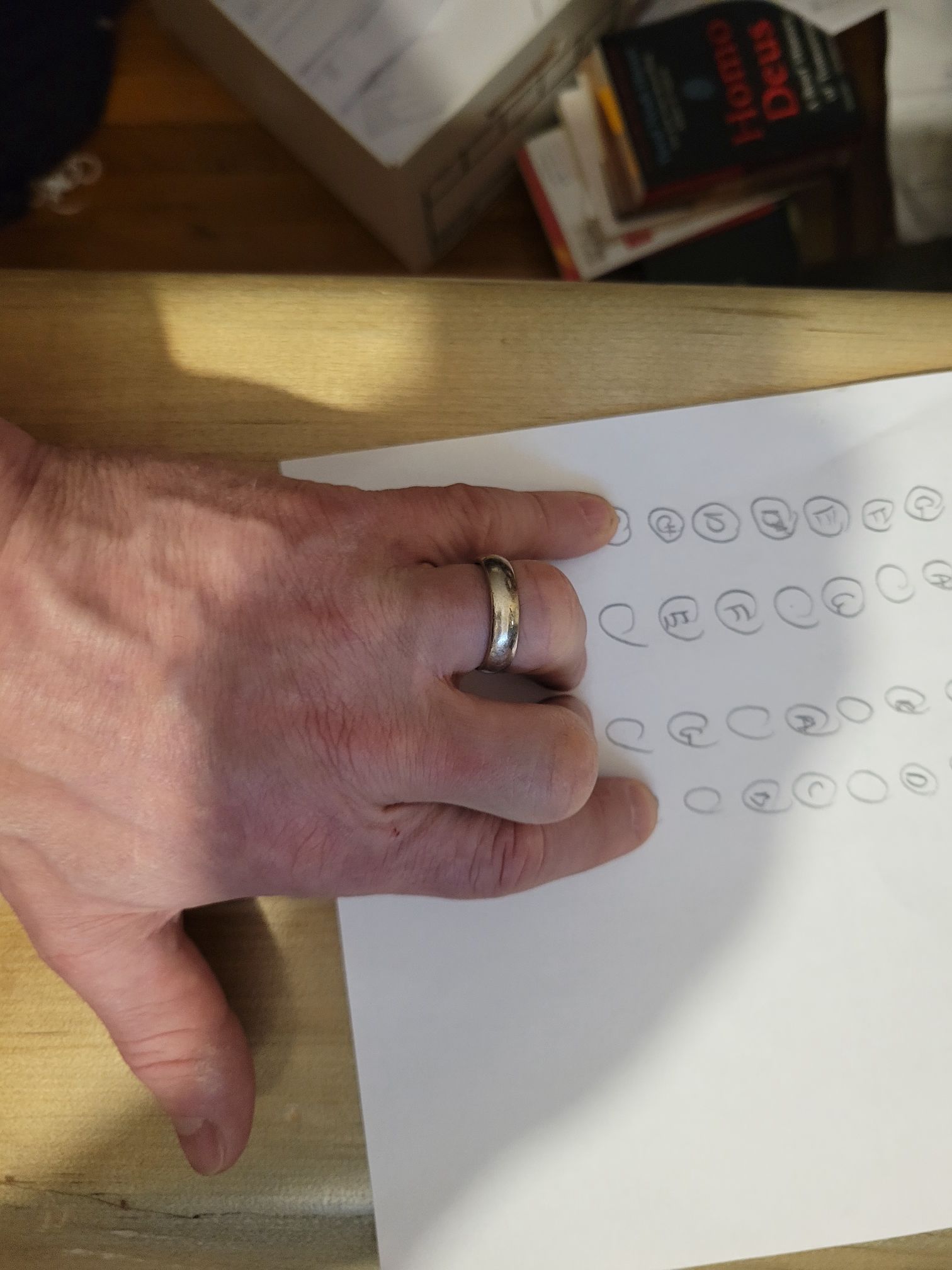
That leaves the G7. For this we want to use a third inversion, with the middle finger staying on the G. The Ring finger extends up to the B. The Pinky extends up to the D. The Ring finger extends up to the F. Again, seems pretty efficient.
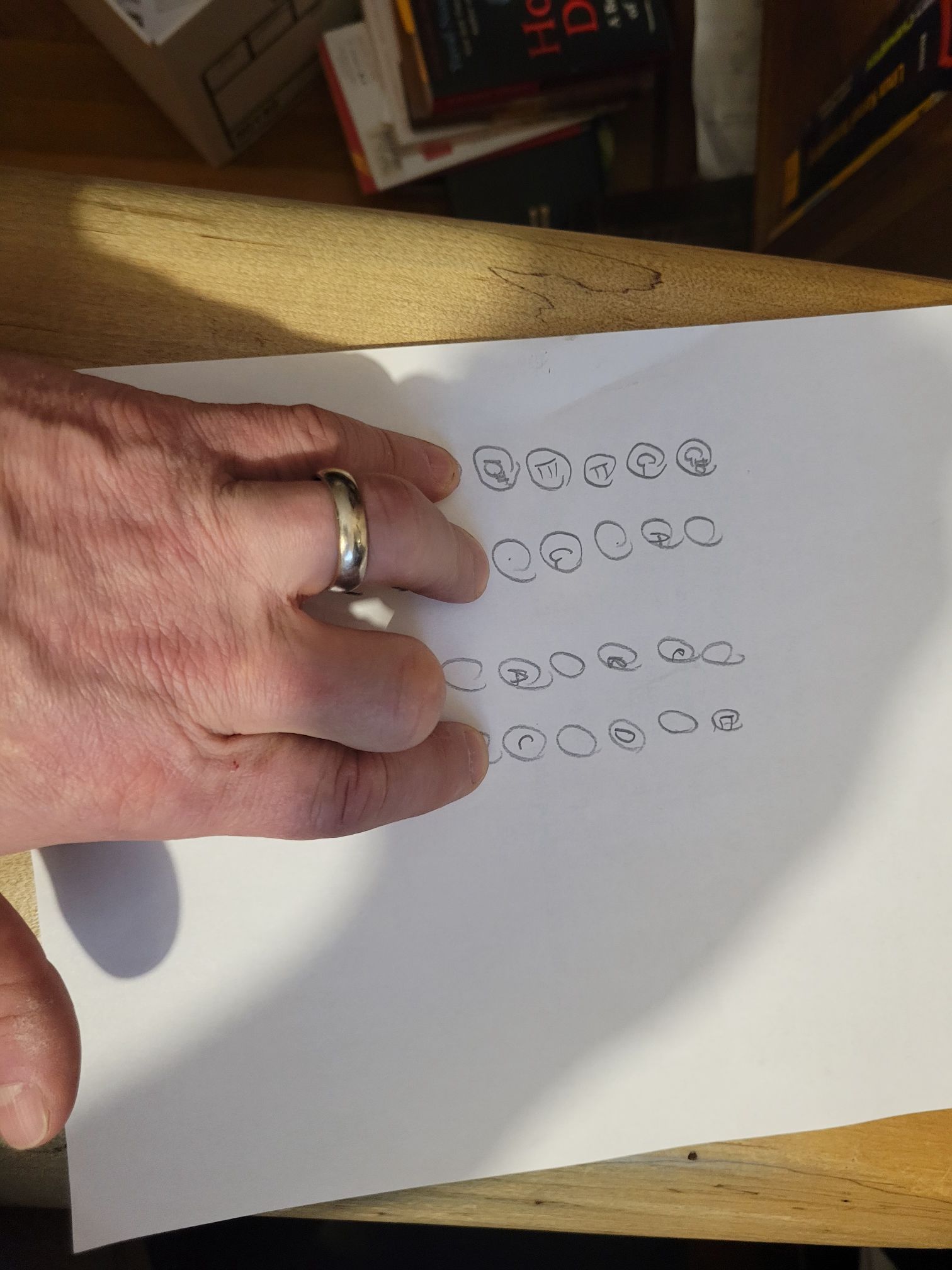
I thik I ma going to do some paper prototyping here.
And with gratitude I think this is a more efficient G7 position.

